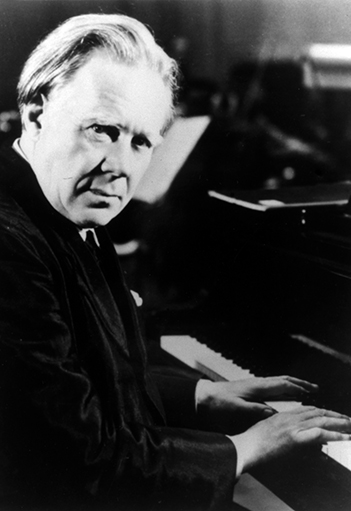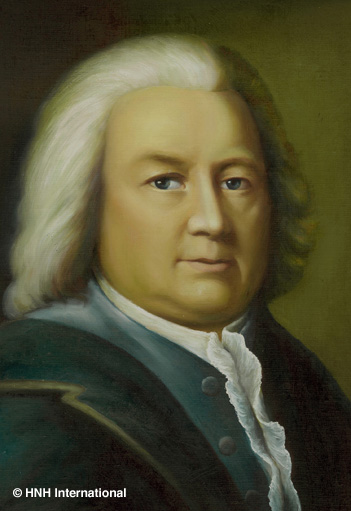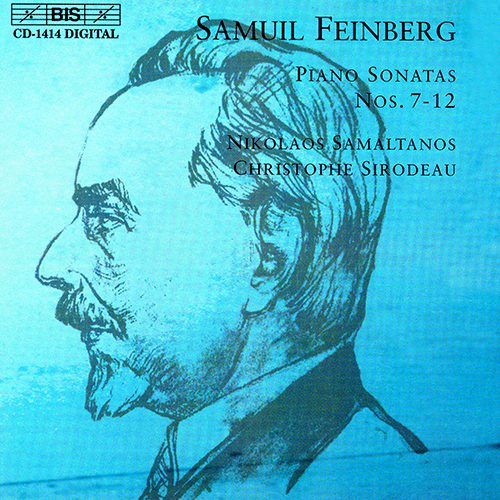FEINBERG: Piano Sonatas Nos. 7-12

|
Oops! Something went wrong!
The application has encountered an unhandled error.
Our technical staff have been automatically notified and will be looking into this with the utmost urgency.
|

Both of Edwin Fischer’s parents were musical and their talented son began piano lessons at the age of four. At ten, Fischer entered the Basle Conservatory where he studied with the composer Hans Huber. When Fischer was eighteen his father died, so his mother, with whom he had a close relationship, took him to Berlin to study at the Stern Conservatory with Liszt pupil Martin Krause, who would later teach Claudio Arrau. Whilst in Berlin Fischer made his concerto debut with the Piano Concerto No. 2 by Eugen d’Albert who was greatly impressed and offered advice and help in his career to the young pianist. After a period of teaching at the Stern Conservatory, Fischer gave recitals and at this time appeared with such eminent conductors as Willem Mengelberg, Arthur Nikisch, and Bruno Walter. He toured in Europe and Britain, but gave only a limited number of concerts.
In the late 1920s Fischer concentrated more on ensemble playing, first by conducting the Lübeck Musikverein and Munich Bachverein and in 1930 forming his own chamber orchestra of Berlin musicians, which he conducted from the keyboard. He also played in a trio with violinist Georg Kulenkampff and cellist Enrico Mainardi. In 1931 Fischer succeeded Artur Schnabel as director of the Berlin Hochschule für Musik, a post he held for four years, and in 1938 he made his Salzburg Festival debut with Mozart’s Piano Concerto in D minor K. 466. During World War II Fischer returned to his native Switzerland from where he gave master-classes and continued to tour until 1954 when he stopped performing in public as he was suffering from a paralysis of his hands. During 1950 Fischer gave a series of concerts in London and other European cities to commemorate the bicentenary of Bach’s death. In these concerts he played all the concertos for keyboard.
Fischer published Reflections on Music, and wrote on the Beethoven piano sonatas and on Bach. He also published editions of Bach’s keyboard works and Mozart’s piano sonatas. He was awarded an honorary doctorate from the University of Cologne for his distinguished services to music.
Fischer’s repertoire was dominated by Bach, Beethoven, Mozart, and Schubert. He also played Chopin and Schumann, but had a wide knowledge of the piano repertoire. Describing Fischer’s pianistic personality is not easy. He was a genuinely honest and kind person whose humanity shone through his music in performances that contained a beautiful, seamless legato, and a pellucid tone quality that is unique to Fischer. He found all things spiritual extremely important to his life as a musician, always searching for the true inner spirit of the music he was interpreting, and longing for ‘…that grace of the quiet hour when the spirit of the composer speaks to us, that unconscious moment when one is raised out of oneself’. (The spiritual purity Fischer was searching for in music is something that today seems to have been forgotten, or is thought to be unimportant as the pressures of piano competitions and a modern lifestyle detach pianists from nature, great literature and the visual arts.)
Edwin Fischer was the first pianist to make a complete recording of Bach’s Das wohltemperierte Klavier which he commenced in 1933. Previously Harriet Cohen and Evlyn Howard-Jones had begun to record the series, but it was eventually abandoned and left incomplete. Fischer’s is still one of the greatest of the complete recordings of Das wohltemperierte Klavier on the piano, even though by today’s standards it may not be ‘historically accurate’ in ornamentation and style. Fischer surrounds the slow preludes with his luminous haze, yet clarity and articulation are always foremost, even if the overall tempo may waver; he makes them sound beautiful yet never romanticised or cloying. Perhaps the best adumbration of Fischer’s musical outlook is his recording of Bach’s Chromatic Fantasy and Fugue recorded in 1931. The Fantasy sounds more like an improvisation with Fischer not fearing to double notes and use extremes of dynamic, his pianissimo being almost hypnotic as it draws the listener in. He makes this Fantasy into an improvisational poem, at times creating moments of aching beauty. He brings the same qualities to Busoni’s arrangement of Bach’s Chorale Ich ruf’zu dir.
At Fischer’s first recording sessions he also recorded Handel’s Chaconne in G major and three years later recorded movements from the same composer’s Suite No. 3 in D minor. Again, these have a wonderfully reflective and inspirational quality.
Many of Fischer’s radio broadcasts have been issued on compact disc, but some of these do not do him justice as he was old and his technique was failing when they were recorded; or they are in poor sound, giving an untrue representation of his wonderful tone.
Of the Beethoven recordings, Fischer’s second version of Beethoven’s ‘Emperor’ Concerto Op. 73 recorded with Furtwängler in 1951 is the better, and is thought by some to be one of the best recorded versions of the work. Of the Beethoven piano sonatas, Fischer’s Op. 110 is extremely fine, as are the ‘Appassionata’ and ‘Pathétique’ Sonatas recorded in the 1930s. Mention should be made of his Mozart piano concertos and Bach keyboard concertos that he conducted himself, although today the Bach concertos do sound rather heavy-footed. In 1954 Fischer made his last series of recordings for EMI/HMV in London. With the Philharmonia Orchestra he recorded Mozart’s Concerto in D minor K. 466 (which he had previously recorded in 1933 with the London Philharmonic Orchestra) and Beethoven’s Piano Concertos Nos 2 and 3, all of which he conducted from the keyboard. As accompanist he recorded Brahms’s Violin Sonatas Nos 1 and 3 with Gioconda de Vito and some Beethoven sonatas. It is, however, the earlier Beethoven sonatas from the 1930s as well as the Schubert impromptus from this period that prove Fischer to be one of the greatest of pianists.
© Naxos Rights International Ltd. — Jonathan Summers (A–Z of Pianists, Naxos 8.558107–10).

Johann Sebastian Bach belonged to a dynasty of musicians. In following inevitable family tradition, he excelled his forebears and contemporaries, although he did not always receive in his own lifetime the respect he deserved. He spent his earlier career principally as an organist, latterly at the court of one of the two ruling Grand Dukes of Weimar. In 1717 he moved to Cöthen as Court Kapellmeister to the young Prince Leopold and in 1723 made his final move to Leipzig, where he was employed as Cantor at the Choir School of St Thomas, with responsibility for music in the five principal city churches. In Leipzig he also eventually took charge of the University Collegium musicum and occupied himself with the collection and publication of many of his earlier compositions. Despite widespread neglect for almost a century after his death, Bach is now regarded as one of the greatest of all composers. Bach-Werke-Verzeichnis numbers, abbreviated to BWV, are generally accepted for convenience of reference.
Choral and Vocal Music
Bach wrote a very large amount of choral music, particularly in connection with his employment at Leipzig. Here, he prepared complete cycles of cantatas for use throughout the church year, in addition to the larger-scale settings of the Latin Mass and the accounts of the Passion from the gospels of St Matthew and of St John. These works include the Mass in B minor, BWV 232, St Matthew Passion, BWV 244, St John Passion, BWV 245, Christmas Oratorio, BWV 248, Easter Oratorio, BWV 249, and the revised setting of the Magnificat, BWV 243. Cantatas include, out of over 200 that survive, Herz und Mund und Tat und Leben, BWV 147 (from which the pianist Dame Myra Hess took her piano arrangement under the title Jesu, Joy of Man’s Desiring, making this the most popular of all), Ein feste Burg ist unser Gott, BWV 80, Ich habe genug, BWV 82, Jesu, meine Freude, BWV 358, Mein Herze schwimmt im Blut, BWV 199, Wachet auf, BWV 140, and Jauchzet Gott in allen Landen, BWV 51, for soprano, trumpet, strings and basso continuo. The rather more formal half dozen or so motets include a memorable version of Psalm CXVII, Lobet den Herrn, alle Heiden, BWV 230.
Secular cantatas include the light-hearted Coffee Cantata, BWV 211 (a father’s attempt to stem his daughter’s addiction to the fashionable drink), the Peasant Cantata, BWV 212 (in honour of a newly appointed official), and two wedding cantatas, Weichet nur, BWV 202, and O holder Tag, BWV 210. Was mir behagt, ist nur die muntre Jagd, BWV 208, was written in 1713 to celebrate the birthday of the hunting Duke Christian of Saxe-Weissenfels and later reworked for the name day of August III, King of Saxony, in the 1740s. The Italian Non sa che sia dolore, BWV 209, apparently marked the departure of a scholar or friend from Leipzig.
Organ Music
Much of Bach’s organ music was written during the earlier part of his career, culminating in the period he spent as court organist at Weimar. Among many well-known compositions we may single out the Chromatic Fantasia and Fugue in D minor, BWV 903, the Dorian Toccata and Fugue in D minor, BWV 538, the Toccata, Adagio and Fugue, BWV 564, Fantasia and Fugue in G minor, BWV 542, Passacaglia and Fugue in C minor, BWV 582, Prelude and Fugue “St Anne”, BWV 552 (in which the fugue theme resembles the well-known English hymn of that name), Toccata and Fugue in D minor, BWV 565, and the Toccata and Fugue in F, BWV 540.
Chorale preludes are compositions for organ that consist of short variations on simple hymn tunes for all seasons of the church year. Better-known melodies used include the Christmas In dulci jubilo, BWV 608, Puer natus in Bethlehem, BWV 603, the Holy Week Christ lag in Todesbanden, BWV 625, and the Easter Christ ist erstanden, BWV 627, as well as the moving Durch Adam’s Fall ist ganz verderbt, BWV 637, and the familiar Wachet auf, ruft uns die Stimme, BWV 645, and Nun danket alle Gott, BWV 657.
Other Keyboard Music
Important sets of pieces are the six English Suites, BWV 806–11, the six French Suites, BWV 812–17, the ‘Goldberg’ Variations, BWV 988 (written to soothe an insomniac patron), the ‘Italian’ Concerto, BWV 971, the six partitas, BWV 825–30, and the monumental two books of preludes and fugues in all keys, The Well-Tempered Clavier, BWV 846–93—the so-called ‘48’.
Chamber Music
During the period Bach spent at Cöthen he was able to devote his attention more particularly to instrumental composition for solo instruments, for smaller groups or for the small court orchestra.
Particularly important are the three sonatas and three partitas for unaccompanied violin, BWV 1001–6, works that make great technical demands on a player, and the six suites for unaccompanied cello, BWV 1007–12. There are six sonatas for violin and harpsichord, BWV 1014–19, and an interesting group of three sonatas for viola da gamba and harpsichord, sometimes appropriated today by viola players or cellists, BWV 1027–9. The Musical Offering resulted from Bach’s visit in 1747 to the court of Frederick the Great, where his son Carl Philipp Emanuel was employed. From a theme provided by the flautist king he wrote a work that demonstrates his own contrapuntal mastery and includes a trio sonata for flute, violin and continuo. Bach had earlier in his career written a series of flute sonatas, as well as a partita for unaccompanied flute.
Orchestral Music
The six ‘Brandenburg’ Concertos, BWV 1046–51, dedicated to the Margrave of Brandenburg in 1721, feature a variety of forms and groups of instruments, while the four orchestral suites or overtures, BWV 1066–1069, include the famous ‘Air on the G String’, a late-19th-century transcription of the Air from the Suite in D major, BWV 1068.
Concertos
Three of Bach’s violin concertos, written at Cöthen between 1717 and 1723, survive in their original form, with others existing now only in later harpsichord transcriptions. The works in original form are the Concertos in A minor and in E major, BWV 1041 and 1042, and the Double Concerto in D minor for two violins, BWV 1043.
Bach wrote or arranged his harpsichord concertos principally for the use of himself and his sons with the Leipzig University Collegium musicum between 1735 and 1740. These works include eight for a single solo harpsichord and strings, BWV 1052–9, and others for two, three and four harpsichords and strings. It has been possible to provide conjectural reconstructions of lost instrumental concertos from these harpsichord concertos, including a group originally for oboe and the oboe d’amore and one for violin and oboe.































